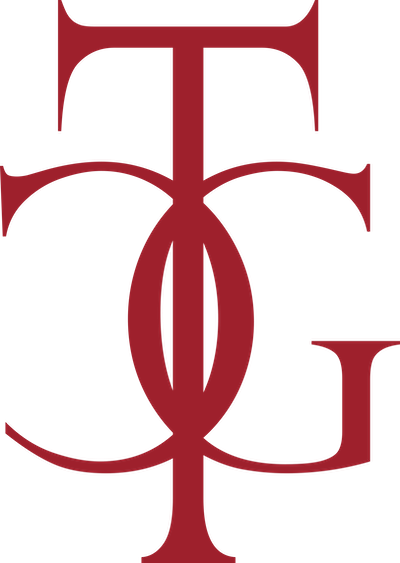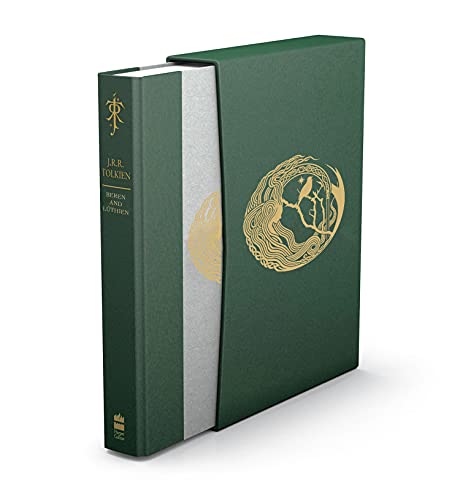Also in the "by" camp. It does seem curious to me that Tolkien would choose to abbreviate the very term about which he is making a point.
But also - and this is admittedly speculative - I think it less likely that he would split the "G" from the "Childe" across two separate lines of the letter. If the remaining space on the page was insufficient to contain "G. Childe" then I would expect the term in its entirety to start on the next following line.
But also - and this is admittedly speculative - I think it less likely that he would split the "G" from the "Childe" across two separate lines of the letter. If the remaining space on the page was insufficient to contain "G. Childe" then I would expect the term in its entirety to start on the next following line.
My point is that Tolkien did not always concern himself with matters such as if the recipient could take his meaning, or even read the letters he wrote to them. So it is perhaps not the direction to look toward for answers.Aelfwine wrote:
My "last point" didn't concern the handwriting, and in fact allowed (though only) for the sake of argument that it actually reads "G." — the question then is (as I asked) what Tolkien would expect Miss Light of London in 1957 to make of "G. Childe"? Trotter thinks it is an abbreviation of "Good" — would Miss Light have thought that? If so, why?
What does give the answer to the handwriting question is the image you supplied, which is beyond convincing I feel. Thank you for including it.
These sorts of threads are ones we enjoy seeing in relation to the Guide. Especially as it gets us closer to what Tolkien wrote and I too am moving to the 'by' camp.
Thank you Aelfwine.
We have been reading the marks as G + full stop, and took "Good" to be the most reasonable expansion of "G." In this, we recalled Tolkien's use of goodman and goodwife in Bombadil Goes Boating in reference to Farmer Maggot and his wife, as well as Tolkien's brief desire in 1944 to replace Gamgee with Goodchild, though that was an entirely different issue.
But Aelfwine's question also occurred to us. Would Joan Light have understood "G. Childe" the same way, or at all? It seemed unreasonable to expect. And was "Childe" to be read as a singular word with an archaic final e, or as an archaic plural form of child, one of several attested by the OED? The construction of the sentence could indicate either.
Now, we too think that Aelfwine is correct about "by" + a stray pen mark - we let ourselves be influenced by the auctioneer's transcription. This eliminates the question of what Joan Light would have made of it - assuming that she could make out Tolkien's handwriting - and Childe makes more sense as the "title of courtesy", spelled in the usual manner of the old word meaning "youth of gentle birth", which Miss Light might have recalled from "Childe Harold's Pilgrimage" or "Childe Roland to the Dark Tower Came".
Unfortunately, it remains unclear what Tolkien meant by "one title of courtesy for all grown-ups, male or female". Were grown-up hobbits to be addressed universally as "Childe"? Or (more probably) did he mean that it was a gender-neutral form of address used by grown-up hobbits for young hobbits like Everard and Melilot? It seems very likely that Tolkien invented this "useful feature of Hobbit-life" on the spot, as a result of not being sure if Joan Light was to be addressed as "Miss" or "Mrs." and wanting to apologize in some clever way. If he ever seriously thought he had committed a "misrepresentation" in writing The Lord of the Rings "modernized", it would be a serious editorial problem, given the number of instances of "Mr.", "Mrs.", "Miss", and (in various senses) "Master" in the text applied to hobbits ("Well, if it isn't Master Pippin - Mr. Peregrin Took, I should say!").
Wayne & Christina
But Aelfwine's question also occurred to us. Would Joan Light have understood "G. Childe" the same way, or at all? It seemed unreasonable to expect. And was "Childe" to be read as a singular word with an archaic final e, or as an archaic plural form of child, one of several attested by the OED? The construction of the sentence could indicate either.
Now, we too think that Aelfwine is correct about "by" + a stray pen mark - we let ourselves be influenced by the auctioneer's transcription. This eliminates the question of what Joan Light would have made of it - assuming that she could make out Tolkien's handwriting - and Childe makes more sense as the "title of courtesy", spelled in the usual manner of the old word meaning "youth of gentle birth", which Miss Light might have recalled from "Childe Harold's Pilgrimage" or "Childe Roland to the Dark Tower Came".
Unfortunately, it remains unclear what Tolkien meant by "one title of courtesy for all grown-ups, male or female". Were grown-up hobbits to be addressed universally as "Childe"? Or (more probably) did he mean that it was a gender-neutral form of address used by grown-up hobbits for young hobbits like Everard and Melilot? It seems very likely that Tolkien invented this "useful feature of Hobbit-life" on the spot, as a result of not being sure if Joan Light was to be addressed as "Miss" or "Mrs." and wanting to apologize in some clever way. If he ever seriously thought he had committed a "misrepresentation" in writing The Lord of the Rings "modernized", it would be a serious editorial problem, given the number of instances of "Mr.", "Mrs.", "Miss", and (in various senses) "Master" in the text applied to hobbits ("Well, if it isn't Master Pippin - Mr. Peregrin Took, I should say!").
Wayne & Christina













 210
210 29.93K
29.93K